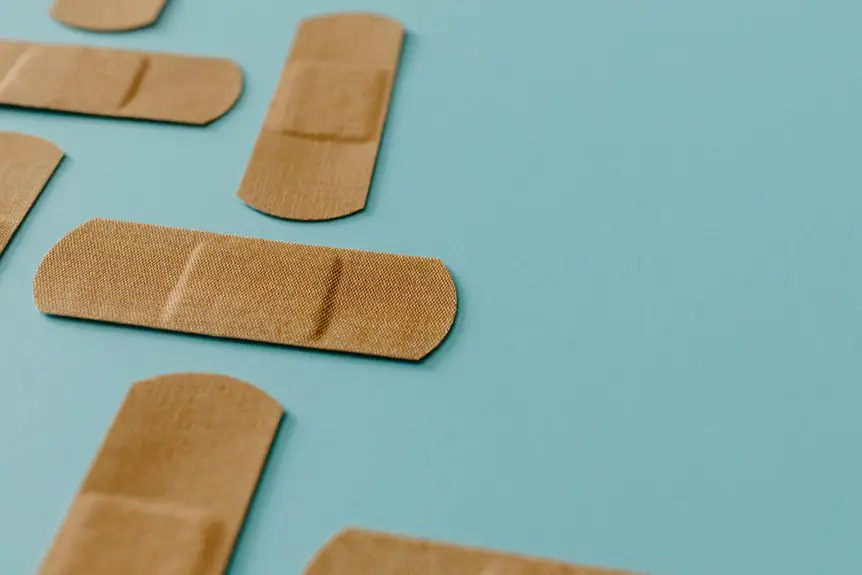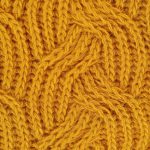Yes, angora fabric can shrink if exposed to heat, moisture, or rough handling. To prevent this, always wash it gently in cold or lukewarm water using mild detergent, avoid wringing or twisting, and dry it flat away from direct heat. If it does shrink, soak it in lukewarm water with conditioner, then carefully stretch it back to shape while damp. Keep these tips in mind to protect your garment and discover more ways to care for your angora pieces.
Table of Contents
Key Takeaways
- Angora fabric can shrink due to heat, moisture, and agitation causing fiber contraction and tangling.
- Prevent shrinkage by hand washing in cold or lukewarm water below 30°C with gentle detergents.
- Avoid wringing or twisting; dry flat away from heat and sunlight while reshaping the garment.
- To fix shrinkage, soak in lukewarm water with gentle conditioner, then carefully stretch back to size while drying.
- Store folded in cool, dry places using breathable bags, and avoid hanging to maintain shape and prevent stretching.
Understanding Angora Fabric and Its Properties
Angora fabric comes from the soft, silky hair of the Angora rabbit, known for its exceptional warmth and lightweight feel. When you wear Angora, you’ll notice how it traps heat without feeling heavy, making it perfect for chilly days.
The fibers have a natural elasticity, so they move with you, offering comfort and flexibility. You’ll also find that Angora has a smooth, lustrous texture that feels gentle against your skin.
However, this delicate nature means you need to handle it with care. Angora fibers are more prone to damage from rough handling or improper washing. Understanding these properties helps you appreciate why Angora requires special attention, ensuring your garments stay soft and beautiful over time.
Why Angora Fabric Shrinks
You’ll notice Angora fabric shrinks because its delicate fibers react strongly to heat and moisture.
When you wash it at high temperatures or agitate it too much, the fibers contract and tangle.
Stretching or rough handling can also cause the fabric to lose its original size and shape.
Fiber Structure Sensitivity
Because of its delicate fiber structure, Angora fabric reacts strongly to heat and moisture, causing it to shrink more easily than other materials.
The fibers are fine, hollow, and lightweight, which makes them vulnerable to changes in their environment. When exposed to moisture, the scales on the Angora fibers swell and interlock, tightening the fabric and leading to shrinkage.
This sensitivity means even slight exposure to water or steam can alter the fabric’s size and shape. You need to handle Angora with care, avoiding conditions that trigger this reaction.
Understanding this fiber structure sensitivity helps you prevent shrinkage and maintain your garment’s softness and fit over time by minimizing unnecessary stress on the fibers during cleaning and storage.
Washing Temperature Impact
The delicate fiber structure that makes Angora so soft also means it demands careful temperature control during washing. If you expose Angora to water that’s too warm, the fibers can contract, causing noticeable shrinkage.
Hot water causes the scales on the fibers to lift and lock together tighter, reducing the fabric’s size. To avoid this, always opt for cold or lukewarm water when washing your Angora garments.
Even small temperature shifts can trigger shrinkage, so maintaining consistent cool water is essential. By controlling the washing temperature, you preserve the fabric’s softness and original dimensions.
Agitation and Stretching Effects
Although temperature plays a major role in Angora shrinkage, how you handle the fabric during washing is just as important.
When you agitate Angora fibers aggressively, you cause them to mat and tighten, leading to unwanted shrinkage. Avoid scrubbing or twisting the fabric, as this rough treatment makes the delicate fibers contract.
Similarly, stretching Angora while wet can distort its shape and weaken the fibers, causing permanent damage. Instead, gently press out excess water and reshape the garment carefully without pulling.
Using a gentle cycle or hand washing with minimal movement helps maintain Angora’s softness and size. By treating your Angora fabric with care during washing and drying, you can preserve its natural loft and avoid the frustrating effects of shrinkage caused by agitation and stretching.
Signs That Your Angora Garment Has Shrunk
How can you tell if your angora garment has shrunk? First, check the fit—if it feels tighter or shorter than before, that’s a clear sign.
Compare its current dimensions to when you first bought it, focusing on length, width, and sleeve size. You might also notice it feels stiffer or less stretchy, indicating fiber compaction from shrinking.
Check length, width, and sleeve size; stiffness or reduced stretchiness signals fiber compaction from shrinking.
Another clue is if the garment seems denser or thicker, which happens when fibers contract. Pay attention to changes in comfort: if it’s less flexible or restricts movement, shrinking likely occurred.
Finally, look for puckering or distortion in the knit pattern, which can signal uneven shrinkage. Recognizing these signs early helps you take steps to restore or prevent further damage.
Best Practices for Washing Angora Fabric
You’ll want to wash your angora fabric with cool water to prevent shrinkage.
Always choose a gentle detergent designed for delicate fibers to protect the fabric’s softness.
Following these simple steps helps keep your angora looking its best.
Water Temperature Guidelines
When washing angora fabric, controlling the water temperature is essential to prevent shrinkage and maintain its softness. Using water that’s too hot can cause the fibers to contract, ruining your garment’s shape and texture.
To protect your cherished angora pieces, keep these guidelines in mind:
- Always use cold or lukewarm water, ideally below 30°C (86°F), to minimize fiber stress.
- Avoid sudden temperature changes; gradual shifts help the fabric adjust without damage.
- If hand washing, fill the basin with water at the right temperature before immersing your angora item gently.
Gentle Detergent Usage
Since angora fibers are delicate, choosing the right detergent plays an essential role in preserving their softness and preventing damage.
You should always opt for a gentle detergent specifically formulated for wool or delicate fabrics. Avoid harsh chemicals, bleach, or strong enzymes as they can weaken the fibers and cause shrinkage.
Use only a small amount of detergent to prevent residue buildup, which can stiffen the fabric. When washing, dissolve the detergent fully in cold water before adding your angora garment to guarantee even cleaning.
Stick to hand washing or use your machine’s delicate cycle with minimal agitation. Following these steps helps maintain angora’s natural softness and shape, keeping your garment looking beautiful and lasting longer.
How to Dry Angora to Avoid Shrinkage
To prevent angora fabric from shrinking, handle the drying process with care and attention. Angora is delicate and needs gentle drying methods to keep its softness and size intact.
Follow these steps to dry your angora properly:
- Lay Flat to Dry: After washing, gently press out excess water without wringing. Lay the garment flat on a clean towel in its natural shape to avoid stretching or shrinking.
- Avoid Direct Heat: Keep angora away from direct sunlight or heaters, as heat can cause fibers to contract and shrink.
- Air Circulation: Dry in a well-ventilated area to speed up drying without risking damage.
Methods to Restore Shrunk Angora Garments
Although angora fabric is prone to shrinking, you can often restore its shape with careful techniques.
Start by soaking your garment in lukewarm water mixed with a gentle hair conditioner or baby shampoo for about 15 minutes. This softens the fibers, making them more pliable.
Soak your angora in lukewarm water with gentle conditioner to soften fibers for easier reshaping.
Gently squeeze out excess water without wringing. Lay the garment flat on a clean towel and carefully stretch it back to its original size, focusing on length and width.
Pin the edges to the towel to hold the shape while drying. Avoid heat or direct sunlight during drying, as this can cause further shrinkage.
If needed, repeat the process until you achieve the desired fit. With patience, you can bring your angora garment closer to its original dimensions.
Tips for Long-Term Care of Angora Clothing
When you want your angora clothing to stay soft and maintain its shape, proper care is essential. Neglecting it can lead to shrinkage and loss of that luxurious feel.
To protect your cherished pieces, follow these simple tips:
- Hand wash gently – Use cold water and mild detergent to preserve fibers and prevent felting.
- Dry flat – Avoid hanging; lay your garment on a towel to maintain its original shape and avoid stretching.
- Store carefully – Keep angora in a cool, dry place, folded rather than hung, and away from direct sunlight to prevent damage and color fading.
Frequently Asked Questions
Is Angora Fabric Hypoallergenic?
Angora fabric isn’t typically hypoallergenic since it contains animal fibers that might trigger allergies. If you’re sensitive, you should avoid it or test a small patch first to see how your skin reacts before wearing it.
Can Angora Be Blended With Other Fibers?
Think of angora as a delicate dance partner; you can blend it with other fibers like wool or nylon to add strength and durability. You’ll get softness with added resilience, perfect for cozy, long-lasting garments you’ll love.
How Does Angora Compare to Cashmere?
You’ll find angora softer and warmer than cashmere but a bit more delicate. Angora fibers are longer and fluffier, while cashmere feels smoother and more durable. Both offer luxury, but handle angora gently.
What Countries Produce the Best Angora Wool?
Imagine soft, snowy hills where fluffy Angora rabbits thrive. You’ll find the best Angora wool coming from France, China, and South Korea, where skilled farmers carefully harvest the finest, silky fibers for luxurious, warm garments.
Are Angora Garments Environmentally Sustainable?
You might find angora garments less sustainable due to ethical concerns around animal welfare and intensive farming. However, if sourced responsibly, they can be eco-friendly. Always check for certifications and sustainable production practices before buying.
- Explore the Versatility of A X RN91714 Corduroy Shirt - July 5, 2025
- Exploring the Comfort of Corduroy: A Thin Layer Between Us - July 5, 2025
- Stylish Tan Corduroy Jumper Dress: A Fabric Lover’s Guide - July 5, 2025







